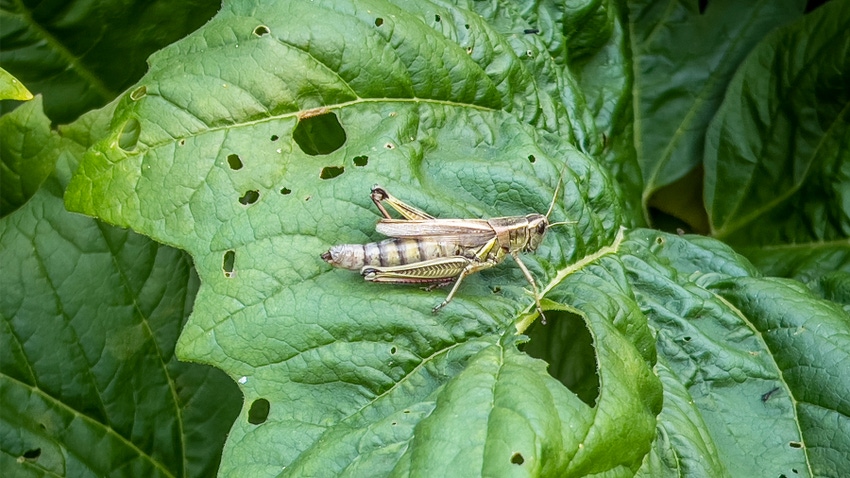August 3, 2023

by Wayne Ohnesorg
Is there anything I can do in September if grasshoppers are eating my garden? September is a tough month for home gardeners. Often people are just ready for the garden to end. Other times, they are trying to maximize their stockpile of salsa or tomato sauce. Especially in the latter situation, you may be dealing with grasshoppers chewing away on your garden plants.
Grasshoppers are a common late-season problem in vegetable and flower gardens. Their damage is quite conspicuous because of the missing chunks of leaves, stems, flowers and fruits. However, managing the grasshoppers this late in the year can be challenging.
Adults are tough
By September, the grasshopper species that plague gardens are adults. The best time to control grasshoppers is when they’re nymphs. Adults take greater doses of insecticides compared to nymphs to kill them. On top of that, the fully developed wings shield a portion of the adult grasshopper’s body. So how do you manage grasshoppers in September gardens?
Management will take two approaches. The first approach will be the immediate, and the second will be planning for future troubles. For immediate issues with grasshoppers in September, your options are limited. Contact insecticides will likely not yield the desired results. This will include insecticidal soaps and oils, and these products are not good choices for grasshoppers at any time.
Products containing the active ingredient carbaryl can be effective. However, read the label directions carefully as the preharvest interval, or PHI, can be seven days or more depending on the garden plant to which it is applied. Hand-picking can be an option, but it will be labor intensive. The best approaches to managing grasshoppers begin much earlier in the year.
Control the young
The bulk of grasshopper species hatch from late May through June in Nebraska. Recently hatched grasshoppers are soft enough that heavy rainfall can kill the nymphs. We can’t control the weather, but it is something to be watching for. Prolonged wet periods can also help control grasshoppers by providing conditions in which the pathogens that attack grasshoppers can flourish.
During the June through July period, drought conditions are an indicator that grasshoppers may be an issue. If your gardens are surrounded by turfgrass, simply mowing your lawn regularly can reduce the number of grasshoppers available to infest the garden. The shorter turfgrass will also lead to the grasshoppers concentrating in taller vegetation areas. While concentrated in those areas, they are easy targets for border or edge treatments.
The contact insecticides will be an effective option for these areas. Insecticides can also be applied as border treatments to keep grasshoppers from invading an area. Again, be sure to read and follow all label directions as products may not be labeled for use in all potential areas you may want to apply.
Ohnesorg is a Nebraska Extension educator.
You May Also Like




